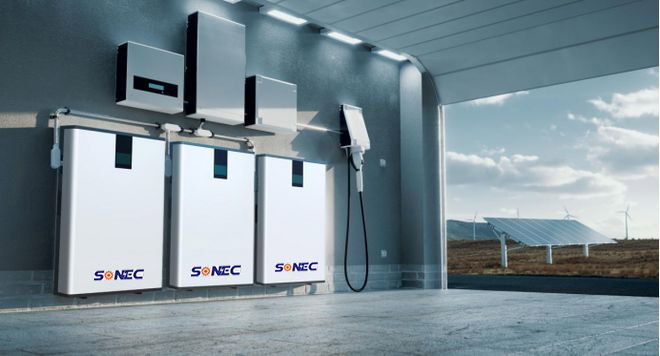Home Energy Storage Battery Overview
Home energy storage batteries are devices that store electrical energy for household use. Primarily used to enhance energy efficiency, provide backup during power outages, and integrate renewable energy sources (like solar power), they operate through charge-discharge cycles. They store excess electricity when supply is abundant and release it during peak demand or outages, ensuring stable household power supply3. Below is a consolidated summary of key information for 2025:

1. Main Types & Performance Comparison
Based on chemical technology, home storage batteries fall into several categories, each with pros and cons:
-
Lithium-ion Batteries: Current market mainstream, including Lithium Iron Phosphate (LFP) and Nickel Manganese Cobalt (NMC).
-
LFP: High safety, long cycle life (3,500+ cycles), heat-resistant—optimal for homes912.
-
NMC: High energy density, fast charging, but higher cost and lower thermal stability; common in portable devices912.
-
Lead-acid Batteries: Mature technology, low cost, but low energy density, short lifespan (~3-5 years), and lead pollution issues are phasing them out910.
-
Flow Batteries & Sodium-Sulfur Batteries: Suited for large-scale storage, long lifespan (10-15 years), but require high-temperature operation and high cost; rare in homes910.
Conclusion: LFP batteries dominate the 2025 home market due to safety and cost-effectiveness12.
2. 2025 Top Brands & Product Recommendations
Leading brands based on market popularity, performance, and user feedback:
-
SonecPower: Focuses on high power/safety. Models (e.g., 12kW/15kW) use LFP cells, support 72-hour runtime, solar compatibility; ideal for outdoor/emergency use25.
-
Xunerx (or similar): Known for fast charging and capacity. Models (e.g., 5500W/8000Wh) feature 3.8-hour flash charge and MPPT solar tech; suitable for off-grid/long trips25.
-
Jackery: Emphasizes portability. Models (e.g., 1000 Plus: 2000W/1264Wh) include multiple ports and smart BMS; ideal for camping/backup46.
-
UGREEN: High value-for-money. LFP tech offers 2,000+ cycles, multi-device compatibility, lightweight eco-design8.
-
Tesla: Powerwall series installed in >850k homes globally. Supports virtual power plants (e.g., Japan pilot), enabling users to sell surplus energy to grids1.
Other notable brands: Ninebot, ECOFLOW—all featuring smart thermal control, waterproofing, and multi-charging (grid/car/solar)46.
3. Key Benefits & Applications
Core value propositions:
-
Energy Efficiency: Pair with solar to store daytime surplus for nighttime use, reducing grid reliance311.
-
Cost Savings: Leverage peak/off-peak tariffs—charge during low rates, discharge during high rates—saving thousands annually7.
-
Emergency Backup: Power critical loads (fridge/lights) during outages. Tesla and others enable grid-scale virtual power plants13.
-
Eco-Friendliness: Reduce fossil fuel consumption; brands like UGREEN use eco-materials811.
Primary Use Cases: Home backup, outdoor activities, off-grid living, and commercial peak-shaving11.
4. Pricing & Cost Considerations
Large systems (e.g., 100kW) cost ~CNY 100,000–300,000 ($14k–42k), influenced by battery type, brand, and components (e.g., inverters):
-
LFP systems: CNY 150,000–300,000 ($21k–42k; long life, high safety)7.
-
Gel battery systems: CNY 80,000–150,000 ($11k–21k; lower cost but weaker performance)7.
Portable units (1,000–5,000W) cost significantly less (thousands to tens of thousands). Payback period typically 5–8 years via electricity savings713.
Conclusion
Home energy storage batteries reached maturity in 2025. With smart management and high-capacity designs, they are now central to household energy management. Prioritize battery chemistry, brand reputation, and application needs when selecting37.

